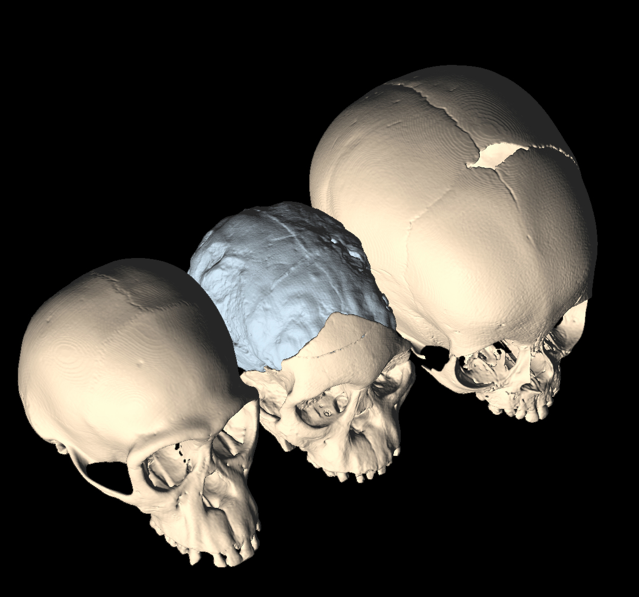New Scientist
Image: M. Ponce de León and Ch. Zollikofer, University of Zurich
The 2.5-million-year-old Taung Child skull is small enough to fit in the palm of a hand. All that’s left of it are a face, jaw and an internal cast of the braincase that formed when sediment replaced its rotting brain. The cast gives us an idea of what the brain of a young Australopithecus africanus looked like.
Dean Falk at Florida State University in Tallahassee and colleagues at the University of Zurich, Switzerland, noticed a faint ridge running from the top of the brain cast down towards the face. They say it shows that the two bones of the forehead had not fused together when the child died, between its 3rd and 4th birthday. As a result, sediment was able to push into the gap between the bones (Proceedings of the National Academy of Sciences, DOI: 10.1073/pnas.1119752109).
That’s unusual. In most primates, and other hominins around at the same time as A. africanus, those bones fuse before or shortly after birth. Only in our genus, Homo, do the bones take longer to fuse, to allow the brain extra room to grow during the first years of life. Read more on newscientist.com…








